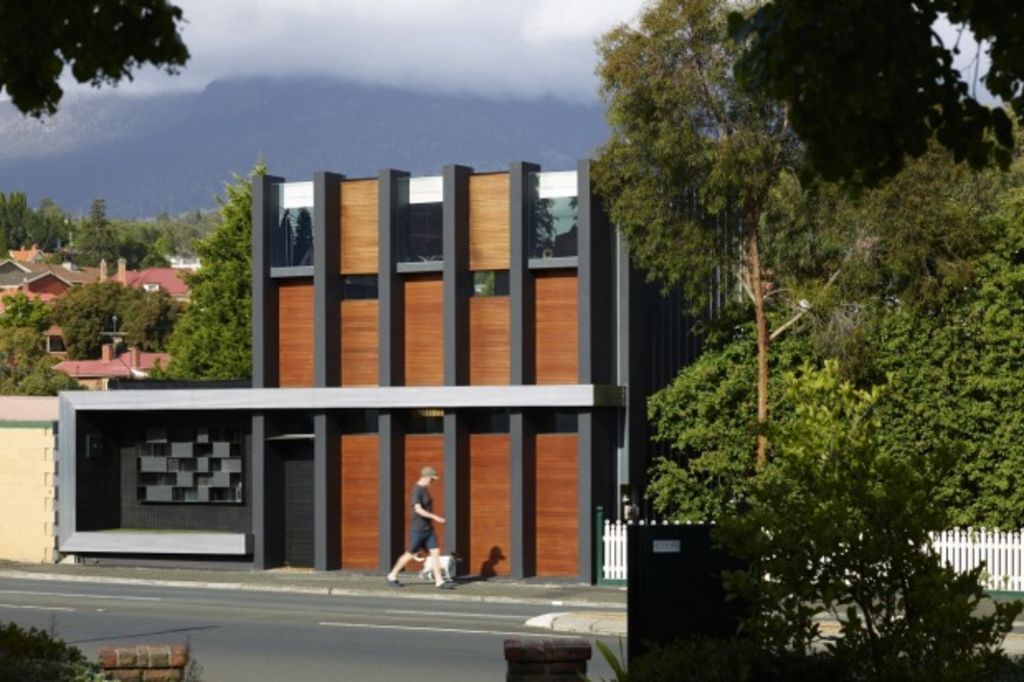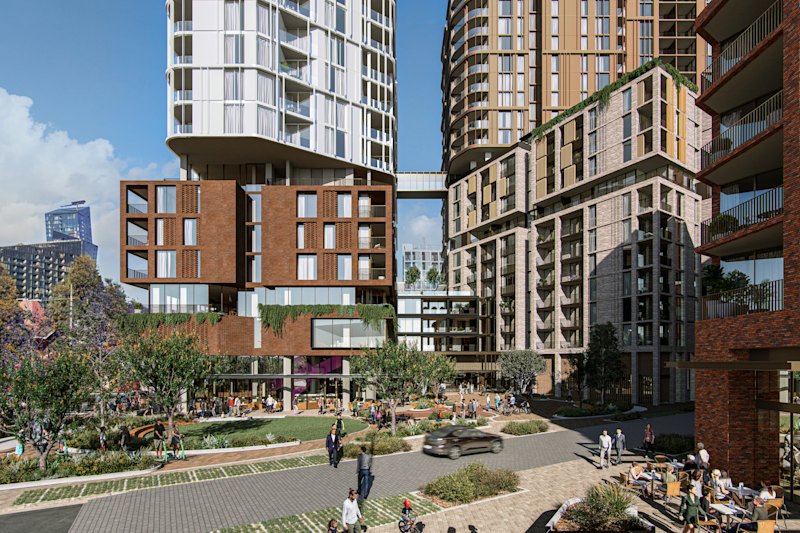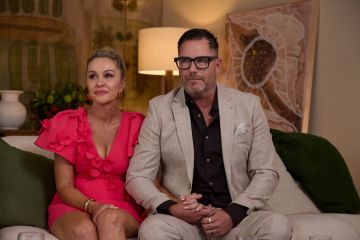Architect experiments for years on design of Hobart house

Punching well above what might be expected of a state with a small economy and population base with an often surprisingly inventive design culture, Tasmania is sending some very engaging projects to the annual Architects Institute of Australia’s national awards in November.
One is a Hobart project that was a once 1960s boot maker’s shop on a sloping 76-square-metre site. It was made by a late-starting architect, Chris Clinton of Core Collective, who experimented on it for years until he’d remade it as a three-level, two-bedroom, manifestly unconventional family home.
The former hydraulics submarine proto-typer, who started his architectural studies at 27, Clinton, now 47, says he had “a shoestring budget” to work with but anyway would have scrounged and sourced all sorts of recycled and repurposed materials and oddities. He found a lot of what he used on the internet.
“I love the idea of playing with and adapting materials,” he says of the build that began with digging out 48 tonnes of earth to drop the building’s lowest level well below New Town Road. He did that to put in a well-insulated basement bedroom for his drum-playing son. “And then he moved out.”
“When you use things in novel combinations,” Clinton says, “it brings life to them. And I love playing with life.”
Using a red brick, sign-daubed wall from the old shop as a spine and putting a beautifully-crafted Tasmanian oak staircase beside it, Clinton says there were many aspects of the building that he crafted “and then pulled down again”.
“I experimented all the way through.” But he was happy with his modus operandi. “It was my time and my sandbox.”
So much is on display from this trialling approach; from the funky facade “that was about making a contribution to the street”, to the many internal elements that slide or swing to open and close views or ventilation apertures. A cabin-like day bed behind a concealing sliding panel is “a place that kids really love”.
The long steel desk in the long, street-level studio is fabricated from steel. “To open the drawers you have to use magnets.” Others have asked if he could repeat the trick in their homes.
Such a lot of good stuff emerged “from playing around the tactile nature of material objects”, Clinton says. Such a tangibly enlivened home came “from making spaces that have a sense of evolution”.
“And that’s a good way, I think, of approaching design.”
We recommend
We thought you might like
States
Capital Cities
Capital Cities - Rentals
Popular Areas
Allhomes
More







